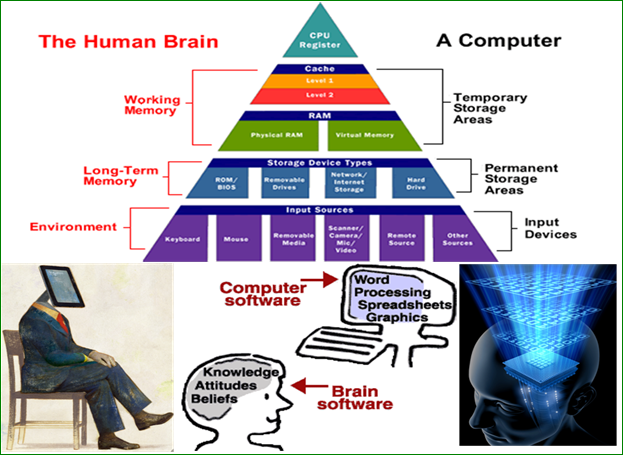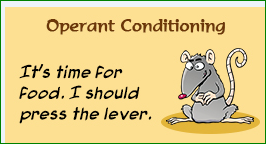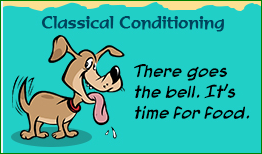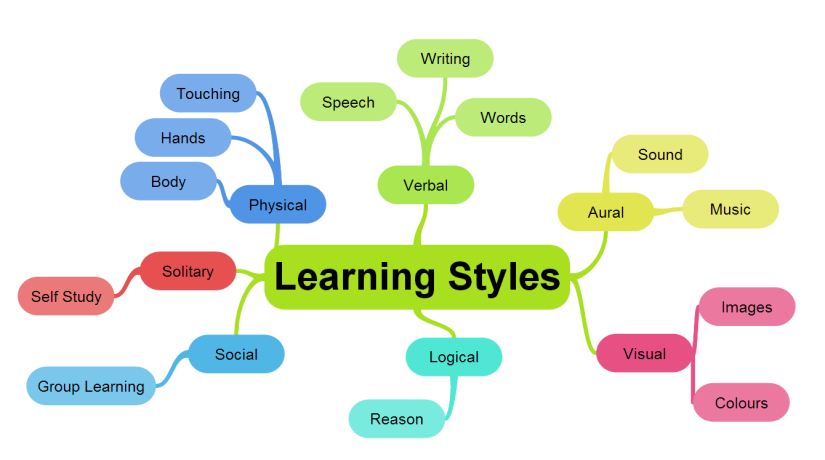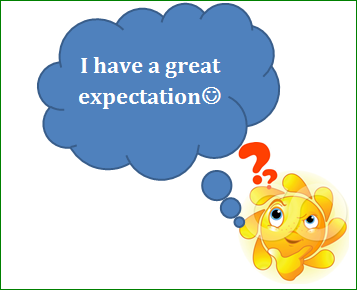Revisit your previous logs and blogs. Assess how your perspectives on learning and teaching have become reinforced or revised. Cite how specific theories are relevant.
BEHAVIORISM THEORY
How does learning occur: A response is performed in the presence of three-term contingency: discriminative stimulus ==> Response==> reinforcing stimulus. A discriminative stimulus and is followed by reinforcing stimulus. The likelihood of response being performed in the future in the presence of that discriminative stimulus is increased. To build complex behavior, needs shaping which consist of the three-term contingency, where gradual estimate to the desired form is successfully reinforced. Also, developmental status and reinforcement history affects learning. Responses to given stimuli are strengthened through repeated reinforcement. So, when learners can transfer stimulus-response to more general and new situations learning has occurred.
Learners’ role: A blank slate; or passive learner to stimulus-response and need to participate in his/her environment and the process in order to learn.
Teachers’ role: Determine the right reinforcement that will increase the desired behaviors and learning. So teachers need to present learners with structured materials (stimuli) and prompts them for the right response.
Role of motivation: Learners are motivated by extrinsic rewards. They are not held to be individually accountable for their learning, because they are simply responding to their environment.
Implication for Instructions: First, learning needs establishing responses to discriminative stimuli and practice is needed to strengthen response. Second, complex skills can be established by shaping progressive, small approximations to the desired behavior. Third, instruction should have clear, measureable objectives, proceed in small steps, and deliver reinforcement. Fourth, contingency contract is needed. Contingency contract is a written or oral agreement between teacher and learner specifying what works the learner must finish to earn a particular reinforce is needed. Fifth, this is best for teaching task-based learning involving lower-order thinking skills such as remembering understanding and applying.
Behaviorism Theory is similar to Cognitive Information Processing Theory since it separates learning from the will of the learner. Behaviorism attributes learning and change to environmental influence. Cognitive theory, learning is gained through sensory experience which is directly influenced by the person’s environment.
SOCIAL LEARNING THEORY
How does learning occur: Learning occurs by doing (enactively) and by observing, reading and listening (vicariously). Observational learning involves four processes: attention, retention, production and motivation. We learn from our social environment; however, since learners learn through observation alone, learning occurs without a change in behavior.
Learners’ Role: Learners are active either by doing the task (where they serve as a model to others) or by observing other people. Similarly, they do not just observe the behavior but also the outcome of that behavior. Also, they need to believe that they are capable of accomplishing tasks (self-efficacy).
Teachers Role: Serve as a model and so they must model the appropriate behavior. The teacher must expose students to different types of models. Use social learning theories to help learner self-regulate conversations and behaviors too. Lastly, teacher needs to set realistic expectations for learners’ academic accomplishments.
Role of motivation: For observational learning to be effective, the learner must be motivated to imitate behavior. In order to achieve this final step, reinforcement and punishment may be beneficial. These external motivators can be effective, but simply witnessing them may be enough; for instance, if a peer is given five minutes longer at recess for being on time, you may be motivated to come to class early.
Implication for Instructions: Begin with social influences such as models and gradually shift to self-influences as learners internalize skills and strategies. Second, determine how instruction affects learning and learner’s self-efficacy. Teachers’ self-efficacy affects instruction because efficacious teachers help promote student learning better. Third, learners should be encouraged to set goals and assess goal progress. In addition, reciprocal determinism is an important factor that affects social learning theory. It says that a person’s behavior, environment, and personal qualities all reciprocally influence each other.
Social Learning Theory is similar to cognitive theory wherein interpretation of human learning is in cognitive form. The awareness and expectations of future reinforcement or punishment have an impact on the behavior shown by the learner. So this theory serves as the bridge between behaviorism and cognitive theories of learning. Also, work like tutoring and mentoring reflect the social cognitive principles.
COGNITIVE THEORY (Information Processing)
How does learning occur: Encoding or learning occurs when information is stored in our long-term memory. Information initially enters the information processing system through a sensory register after it is attended to. It then is perceived by being compared with information in long-term memory and enters the short-term or working memory. This information can stay activated, be transferred to long-term memory or be lost. Factors that help encoding are meaningfulness, elaboration, organization and links with schema (organized memory structures composed of related information) structures. Also, memory is the key component in information processing system. The memory receives information and through associative networks links it with other information in memory.
Learners’ Role: As “information processor”; passive in acquiring knowledge and so there is a need to consciously look for connections between prior knowledge and new information by transforming, rehearsing, storing and retrieving them. This information is received through their senses and the environment determines what the learner is exposed to. Since learners are passive in acquiring knowledge so they can choose what knowledge can they gain; their actions are a consequence of their thinking.
Teachers’ Role: Create an organize environment where learning is facilitated through the use of many senses and structured practice. Teacher must provide learners with strategies that allow them to connect new knowledge to existing knowledge.
Role of motivation: Uses both intrinsic and extrinsic motivation. Intrinsic is shown by the active role played by the individual. This includes such things as concept mapping and prior knowledge. Those who are externally motivated are more likely to use strategies that work for short-term performance (like cramming the night before a test), but do not lead to understanding and effective information processing over the long-term.
Implication for Instructions: The transformation and flow of information is through cognitive system. Information must be presented in a way that students can relate the new information to known information (meaningfulness) and that they understand the uses for the knowledge. Likewise, learning must be structured so that it builds on existing knowledge and can be clearly comprehended by learners. Moreover, teachers should provide advance organizers and cues that learners can use to recall information when needed and that minimize cognitive load. Lastly, this theory is best applied in teaching problem-solving involving higher-order thinking skills such as understanding, applying, analyzing, evaluating and creating.
Cognitive Theory or Information Processing Theory is similar to Schema Theory that explains how learners organized memory structures which are made up of related information. So, both have stages of memory that stores and build information based from previous knowledge. Cognitive theory relates learning to the learners’ exposure to his environment while in Schema Theory it’s the learners’ previous schema that affects learning.
CONSTRUCTIVISM THEORY
How does learning occur: Learners form or construct their own understandings of knowledge and skills. The environment and social factors affects learners in constructing knowledge.
- Piaget’s theory emphasizes equilibration or the process of making internal cognitive structures and external reality consistent.
- Vygotsky’s theory places a heavy emphasis on the role of social factors and learning.
So, learning occurs when learners used their knowledge in a real-world situation.
Learners’ role: An active participant in building interpretations of the world based on individual experiences. Learners use the tools of their culture such as language and symbols to construct meaning.
Teachers’ role: To structure the learning environment so that learners can construct their own understandings. Teachers help learners in exploring topics that depend on dialogues consisting of open-ended questions to encourage learners to analyze, interpret and predict information to create new meanings.
Role of motivation: From Piaget’s perspective, learners are intrinsically motivated because they must be self-directed and actively interest. While in social constructivism, values and attributions can vary by culture. As we grow and develop as members of our community, we adopt the cultural norms, attitudes, and beliefs. As a result, what may be intrinsically motivating to one individual may hold little interest for another.
Implication for Instructions: The provision of instructional support or scaffolding assists learners to maximize learning in their zone of proximal development. ZPD is determined by our prior knowledge. As we gain knowledge, our ZPD is raised to a new level and we work to succeed at more challenging tasks. This theory promotes on using curricula customized to the students’ prior knowledge and hands-on problem solving which involves higher order thinking skills.
Piaget’s schema theory that explains how learners develop organized memory structures that consist of related information is similar to cognitive theory since both deals with memory about previous knowledge to build a new one. Also, it explains that our cognitive development evolves through time.
In conclusion, learning theories provide a pedagogical basis for understanding how learners learn. As McLeod’s says “Each theoretical perspective offers benefits to designers but the perspectives must be taken into context depending upon the situation, performance goal(s), and learners. And since the context in which the learning takes place can be dynamic and multi-dimensional, some combination of the learning theories and perhaps others should be considered and incorporated into the instructional design process to provide optimal learning.”
Describe how the activities (discussions, blogs, etc) have facilitated (or hampered) the evolution of your perspectives on learning and teaching.
In the first two week of learning EDS 103 I was so engaged and at pace with my learning. I can attribute my working schedule and the weight of the activity in this class result to my engagement in the discussion fora and e-journal. However after that, I really struggled since the pressure of my work and my study time are at a clash. Ironic to say, I have to read my EDS lesson after my afternoon class but the quality of my reading wasn’t so high that I have to repeat reading when I get home. In my goal to write a better output, I encounter difficulty on how I can organize my thoughts and incorporate it to the topic that we are learning. I feel sad that I take my working hours to have an extra time in my study. Meaning to say, I spend more time studying than work at school. The good thing is, as I study the more I apply my learning in my teaching that even my foreign co-teachers have observed; but still my performance as a learner with regards to speed and schedule lags 😦
How have my perspectives changed (or been affirmed)?
Ever since this class opens, my perspective as a teacher has changed. Some of the changes that I made were:
- Redecorating my classroom, starting from the door, to the bulletin boards, and cupboards — they all signifies motivation for learning. This was influenced by my understanding of classical conditioning. By doing this redecoration I’m setting the mood of my students for learning.
- Posting agreed upon classroom rules. This was influenced by operant conditioning and modeling. For every rule followed comes a reward either a plus mark or praises and other students practice this behavior. While for breaking rules, a minus mark or negative consequences that hinder the behavior to happen again.
- Conduct priming when some of the physics problems like vector resolution were so complex for them to understand, this result in students getting high marks in the exam.
- Emphasis on collaborative activity in the formative stage whether the activity calls for a problem solving, reporting or experiments. This result in learning where weak students got more understanding and confidence than they do the activity alone.
- I become aware of the term cue sheets, scaffolding, ZPD, reciprocal determinism which I unknowingly been practicing as a teacher J I also become aware of the term “verbal thinking” that before I considered it as noise and annoying especially when I let the class do an individual task. However, now I understand that they are just saying out loud what they are thinking so they can be comfortable in solving the given problem.
- Emphasis on primacy-recency effect. Unlike before, I usually spend the first 10 minutes of the time either reviewing previous lessons and unfinished task, but now I use the first ten minutes to give emphasis on what we are going to learn and give the important points of the topic, then I proceed to the activity whether it is individual, pair or group and last is the closure or conclusion about we’ve learned. I also learned to divide my 80-minute class into series of learning episodes to break the boredom and pressure of learning on the part of the students.
What views do I continue to weigh?
I feel like I didn’t understand much about the application of multiple intelligence and learning styles in my teaching. I tried to integrate some of those characteristics in my teaching but for it to be effective I have to redesign my lesson plans and extend the learning time. Considering that I have six different subjects in a week, it will be too taxing on my part. Sad to say, this is the topic that cause a domino effect in my performance and speed of accomplishing task. 😦
What reasons push me to ponder about my views?
I feel like and I observed that most of my students from Grade 7-9 have different types of intelligence and learning styles and so the idea of integrating these two principles in my teaching would be very helpful so I can help them reach their potential in learning.
What good reasons may there be to justify the shifts in my perspectives?
I’m not actually shifting from one perspective to another. I realized that I’ve been practicing the theories that we are learning here in the class without my knowing due to my limited theoretical background about teaching. That’s why if you try to read my journal, most of my posts come to a realization and making connection of the theory or principle to the actions and behavior that I manifested in my teaching. So this time, I am matching the right principle to the actions that I practice and analyze why it works or did not work and how can I make it better. I feel excited about it and every time my realization works I am so enthused that I share it with my foreign co-teachers who have the same condition as me that sometimes we have an educational argument about it 🙂
Can I support my claim that I am evolving into a better learner?
In my personal view, learning EDS 103 opens my eyes to the importance of understanding different theories of learning, its pros and cons, and how I can apply it in my teaching. I thought before, anyone can be a teacher and it’s easy to be a teacher. Nevertheless, aside from passion to teach, it takes great knowledge and time to fully understand the concepts behind teaching and learning for a person to become a better teacher. Also, performance wise and beating deadline in this subject is where I struggled much.
Can I support my claim that I am evolving into a better teacher?
Now that I have the knowledge and the experience about teaching and learning, I’m proud to say that I am evolving into a better teacher. 🙂
What THEORETICAL PRINCIPLES UNDERPIN my perspectives, old and new?
Based from our study I discovered that I was more inclined in cognitive (information processing) and cognitive and social constructivism theory. Since I am teaching science, I usually give much emphasis on the process of building knowledge and relating that knowledge into the daily life activities of my students in their respective community. In my search for information to make my lesson I usually make examples that are present in the surroundings of my students so they can see the importance of what we are learning in the classroom to the life outside the classroom. Likewise, since I’m teaching using the second language, students find it easy to understand the topic if I will let them do “hands-on” activities whether its simulation, board work or experiment.
How do my views reflect on my PERSONAL EPISTEMOLOGICAL THEORIES—i.e., my personal beliefs about the nature of knowledge and knowledge acquisition?
This time I’ve been thinking… Learning and Teaching is like baking. 🙂 Given the right recipe (from many choices of recipes), ingredient, materials and apparatus in baking, following the right process of choosing the ingredient, measuring, mixing, temperature and time we can make a delicious, fluffy and moist cake. Without the right process of searching for information about recipe in baking, reading and understanding its process, practicing how to do it and observing/ or experiencing its result, one cannot say that he/she bakes a cake. We can only be proud to say that we baked a cake if we undergo the process that I’ve mentioned. By showing the cake to other people to taste and give their comments about it is the fulfillment of that process. That cake can never be accomplished without the person’s motivation to bake. That— describes learning.
Learning is a continuous process of acquiring knowledge. My surroundings, emotions, genes, previous knowledge, hands-on activities, motivation, learning styles are just some of the factors that affect the way I learn. If I can use that knowledge and brings improvement in my personal life, in my work and in the community where I live I know that I learned.
THANK YOU TEACHER MALOU 🙂 I may have a hard time in the course of my learning but I am happy that I “mentally” grow. I just hope that I can continue to use what I learned in this subject into my teaching…
Until next time… 🙂
Marie
Reference:
http://atibook.ir/dl/en/Others/Education/9780137071951_learning_theories_an_educational_perspective_6th_edition.pdf





